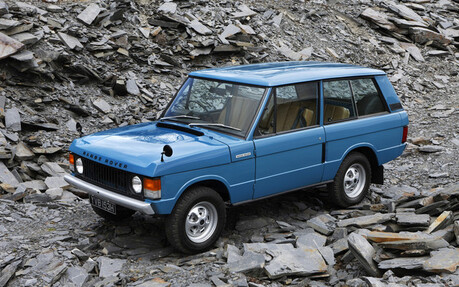Range Rover Explores It's Middle-Age
Few vehicles are as forward-looking as the Range Rover. Singlehandedly responsible for creating the luxury SUV market segment, the upscale Land Rover offshoot has successfully passed four decades on this Earth with nothing short of amazing grace.
Debuting in 1970, the first Range Rovers may have borne little likeness to the modern leather-upholstered, luxury-feature festooned behemoths we know and love today, but offered heaps more comfort than the contemporary Jeeps, International Scouts and Toyota Land Cruisers it competed with. While Land Rover still struggled to offer a semi-humanoid seating position in their then-new Series III leaf-sprung vehicles the Range Rover provided well-heeled buyers with carpets, adjustable seats, a modern dashboard and gauge package, stylish aluminum body panels, effective climate control, a radio, and coil springs. Earning the respect of everyone from Arab oil sheiks to the Queen herself, the Range Rover made an incredible impact on the motoring world.
Now, the Range Rover brand is as strong as ever, with both Range Rover and Range Rover Sport models selling exceedingly well. Considered by many to be the pinnacle of the SUV market, the brand and their vehicles are unquestionably impressive, and blend luxury and off-road performance in nearly equal measures that no other vehicle can come close to laying claim to. With the English brands’ current ownership extensively researching gas/electric hybrid technology and developing new, lighter vehicle superstructures, one can expect to see the Range Rover badge remain a significant force in the marketplace for decades to come.
